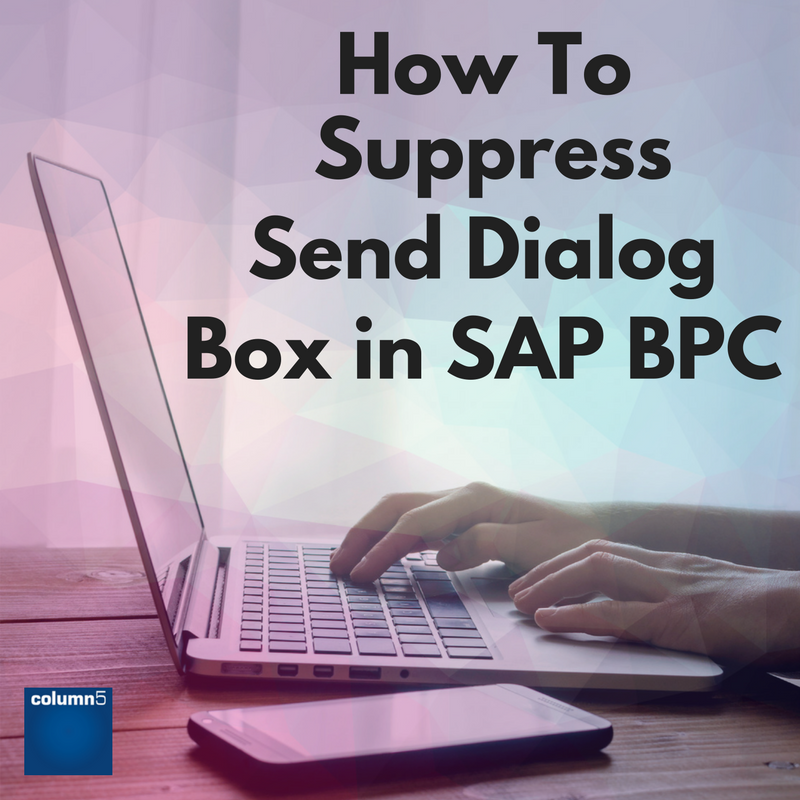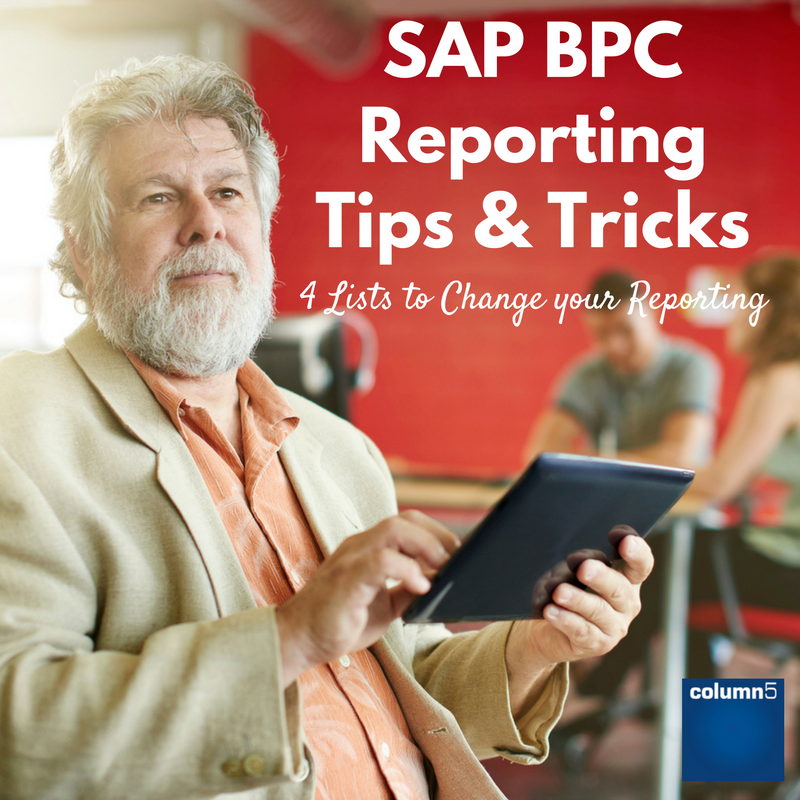For those who missed our 2016 blog posts! Here at Column5, we believe that user education is paramount. Because of this we provide our viewers and clients many free educational resources. If you love a post or want us to post something specific, throw us a comment below!

SAP Analytics
Thought Leadership
SAP BPC: Top 5 Most Viewed Blog Posts of 2016 (So Far)
Topics: best
Tax Reporting Just Got a Whole Lot Tougher! (Thanks to the OECD)
You may have noticed in the news recently that many large multinationals have been the subject of some rather intense media and public scrutiny regarding the amount of tax they pay in certain countries. As media pressure and public anger has escalated, governments and regulators have been compelled to take action to improve the visibility of where companies make their profits and where they pay their taxes to help ensure that they pay a fair share to the coffers of the national governments.
It had become obvious to governments that the underlying issues could not be addressed by unilateral regulation and instead need a cohesive joined up approach to tackle tax base erosion and profit shifting through transfer pricing arrangements between multinational subsidiaries. The OECD in conjunction with the G20 countries devised an action plan which includes the need for greater levels of disclosure from multinational enterprises (MNEs) in relation to the countries where their economic activities occur and amounts of tax they pay in each jurisdiction. This has resulted in the creation of the Country by Country (CbC) reporting standards by the OECD that are being implemented through the local tax governing bodies of all OECD members.
The OECD CbC regime requires the following reporting on a country by country basis;
Aggregate country wide information relating to the global allocation of
* Income;
* Taxes paid;
* and; other indicators of economic activity (stated capital, accumulated earnings, tangible assets, no of employees)
Topics: Center of Excellence, Process Improvement, Thought Leadership, best
BPC has always been a flexible tool with many “hooks” through Excel and the database layer enabling all manner of customizations to increase usability to customers’ exact specifications. The risk of customizing is the potential of that customization being an impediment to an upgrade. One popular access point provided by SAP/OutlookSoft was the “MNU_Commands” hook.
Topics: Thought Leadership, BPC (Business Planning & Consolidation), best
This blog is part of a series on reporting techniques to help you get more value from SAP BPC.
DROP-DOWN LISTS help make a worksheet more efficient by provided a controlled list of options that make the report or input template respond to preconfigured options.
To create the list use Excel’s Data Validation tool. We are going to take this a step further by populating the list with EPM reports on a ‘List’ tab within the workbook. In the snapshot below we are using drop-down list for Company, Cost Centre, Program, and Account. Each drop-down list will have its own report to populate the list.
COST CENTER LIST: A list of cost centers is created using fixed members that had been input. In this example, the dropdown has a friendly label that is the result of concatenating ID & Description, but the report will only use the dimension ID’s referenced on the list tab by using Excel’s VLOOKUP function to match the concatenated friendly label to the ID from the right row.
Topics: Best Practices, Excel, Enterprise Performance Management (EPM), best
The formatting strategy chosen for a report or input schedule is one of the most important decisions made in development because it influences performance, complexity and the “fun factor” for development. I say this with humor because the report may take 4 hours to build and 8 hours to format! There isn’t room enough to go into all aspects of formatting in detail, however the understanding of choices we have is critical and can certainly influence the overall life cycle (maintenance and productivity).
The EPMFormatting sheet is used to format dynamic reports and input templates. It is an Excel sheet that can be copied and changed for multiple worksheets and reports. Dynamic formatting means the formats are applied to levels of a hierarchy, types of members or column and page axis dimensions.
Topics: Best Practices, Excel, Data, best
Since its early OutlookSoft days, BPC has always been touted as a tool that enables finance teams to become independent from IT so they can wield control of the system during crunch time. Fast forward to SAP acquiring BPC, many SAP shops pride themselves on have the internal capabilities to own their systems, period. It isn’t shocking that many of our clients have come ready to meet the challenge of proper care and usage with an internal team. Column5 applauds this approach and has created numerous tools to help your team succeed:
Topics: Center of Excellence, Project Management, Training, Innovation, best
Subscribe
Recent Posts
Posts by Topic
- Enterprise Performance Management (EPM) (93)
- BPC (Business Planning & Consolidation) (75)
- Best Practices (51)
- Performance (49)
- Thought Leadership (47)
- Implementation (35)
- Process Improvement (27)
- Training (25)
- Value (25)
- EPM (19)
- Project Management (19)
- Data (16)
- Excel (16)
- BPC (15)
- Roadmap (14)
- sap bpc (14)
- User Experience (12)
- Analytics (11)
- EPM ROI (11)
- Center of Excellence (10)
- Financial Information Management (10)
- Microsoft (10)
- Business Intelligence (BI) (8)
- Cloud (8)
- EPM 10 (8)
- Forecasting (8)
- HANA (8)
- best practices for epm (8)
- Darwin EPM (6)
- Innovation (6)
- NetWeaver (6)
- Technical (6)
- best (6)
- EPM Maturity (5)
- Financial Close (5)
- sap (5)
- BPC11 (4)
- Consolidation (4)
- EPM Add-in (4)
- Executive (4)
- Product Focused (4)
- SO - BPC v10.x (4)
- SO - BPC v11.x (4)
- epm summit (4)
- technology (4)
- xp&a (4)
- Analysis Office (3)
- BPC NW – Embedded (3)
- BPC logic (3)
- BPC planning Master Data and Data Structure (3)
- BPCv10 embedded (3)
- Case Study (3)
- EPM Roadmap (3)
- Extended Planning & Analysis (xP&A) (3)
- OutlookSoft (3)
- SAC (3)
- group reporting (3)
- reporting (3)
- #EPMInnovation (2)
- AISuccess (2)
- API (2)
- Analytics Cloud (2)
- BPC 11, Version for BW/4HANA (2)
- DarCE (2)
- EPM Landscape (2)
- Epm Academy (2)
- FUTURE OF SAP BPC (2)
- Functional (2)
- Performance Tuning (2)
- SAP Analytics Cloud (2)
- SAP HANA (2)
- SO - BPC v7.x (2)
- SO - Functional Track (2)
- SaaS (2)
- Services Focused (2)
- Upgrade (2)
- analytics tune up (2)
- tuneup (2)
- Analysis plug-in v2.7 for Office (1)
- BFC (1)
- BPC Alternatives (1)
- BPC Lifeline (1)
- BPC PLUG-INS (1)
- BPC v10 upgrade (1)
- BW (1)
- CPM (1)
- Capital planning (1)
- EPM & Analysis plug-ins (1)
- EPM Investment (1)
- EPM events (1)
- Embedded (1)
- Extended Support for SAP BPC (1)
- Investment Comparisons (1)
- Rapid Deployment Systems (1)
- SAP BFC Migration (1)
- SAP BPC Technical Issues (1)
- SAP EPM Add-in Crashing (1)
- SAP EPM Add-in Performance (1)
- SO - Executive Track (1)
- SO - Platform - Microsoft (1)
- SO - Technical Track (1)
- VB (1)
- webcast (1)
3 S T E P S
To Enhance Your EPM Performance:
1.Get Your Ultimate Guide to Improving SAP EPM Performance
Learn what could be contributing to your poor performance and how to diagnose common problems. Get tips that will empower you and your team to improve the performance of your system in order to get the most out of your SAP EPM Investment.
2. Test Your BPC Performance
Get a BPC performance report card and custom report to identify performance issues you may not even know you have.
3. Get Your EPM Assessment
Our assessment delivers a complete, best practice roadmap for you to follow. We’ll work together to assess what you need to pivot your financial forecasting, planning, reporting and analysis to handle the compressed requirements from the volatile COVID-19 environment.














